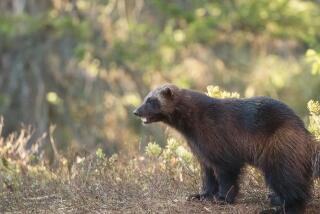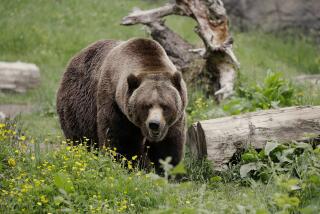A Ruling to Howl About
Western ranchers cried wolf, but to no avail. The reintroduction of the gray wolf in Yellowstone National Park and neighboring Idaho has been a tremendous public and natural success. Now the program has won a legal battle with livestock growers who claimed the wolves would ravage their herds and hurt their livelihood. In a 3-0 decision, a federal appeals court in Denver has ruled that the program meets the legal requirements of the Endangered Species Act and the wolves may stay.
The opinion upholding the actions of the Department of the Interior was so emphatic that a lawyer for Defenders of Wildlife called it âa slam dunk--something thatâs rare in our business.â The American Farm Bureau Federation, which brought the suit, should pursue it no longer. A successful appeal is not likely.
The decision should also convince the U.S. Fish and Wildlife Service that itâs time to develop a long-range plan for restoration of the wolf to more of its traditional roaming grounds in various regions of the country. There are now about 3,000 wolves in the United States outside of Alaska, most of them in northern Minnesota.
Fourteen wolves were transplanted from Canada to Yellowstone in 1995, more than 70 years after the last Yellowstone wolves were killed by federal hunters and trappers. An additional 17 were released in the park the next year, along with 35 in Idaho. Now, more than 300 wolves roam the region.
In a concession to ranchers and Western senators, the program was designated experimental, a status that allows wolves to be shot if caught attacking sheep or cattle on range land outside the park. Wolves do like to roam.
The Defenders of Wildlife promised to compensate ranchers for any stock losses. Lost during the first three years were only 84 sheep--63 attributed to a single wolf--and seven cattle, far fewer than predicted. The Defenders paid more than $21,000 to the ranchers.
Still, the ranchers battled the wolves on the legal front. They prevailed in federal district court in Wyoming, where a reluctant judge said the wolves would have to be removed--shot, in all likelihood. The order was stayed pending appeal.
The wolf packs have been tremendously popular in Yellowstone, where an estimated 30,000 visitors have seen the elusive canines. Park Service biologist Doug Smith said, âYellowstone has become the premier place to watch wolves in the world, bar none.â
The wolf has also begun to balance distortions in the ecosystem, in part by preying on the perennially overpopulated Yellowstone elk herd, mostly the old, infirm and young. In more modest numbers, the red wolf has been reintroduced in North Carolina and the Mexican wolf in Arizona. In fact, the Fish and Wildlife Service is beginning to consider removing some wolves from the threatened and endangered species lists. That would be a mistake now.
We agree with the desire of the Defenders of Wildlife to restore wolves wherever there is enough habitat and prey to sustain them. The return of the gray wolf to Yellowstone has given new dimension to the concept of wilderness. Hear a distant wolf howl and know the thrill of the wild.
More to Read
Sign up for Essential California
The most important California stories and recommendations in your inbox every morning.
You may occasionally receive promotional content from the Los Angeles Times.










